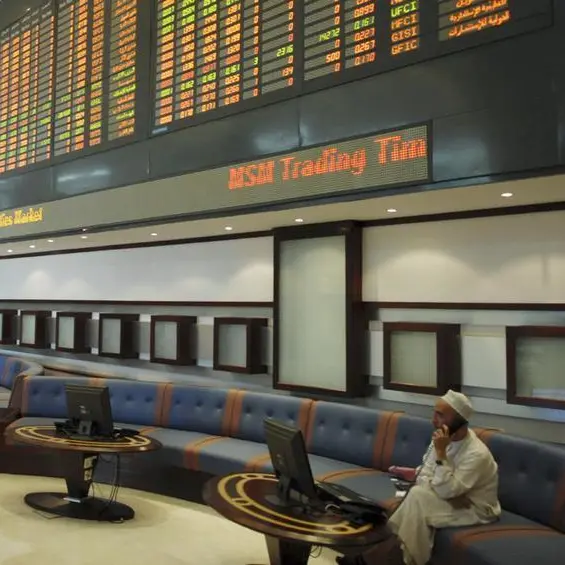PHOTO
* U.S. crude inventories rise unexpectedly
* Brent rally runs out of steam before $50 barrier
* Dollar rises as Fed keeps rate rise in play
* Supply outages support, but some Nigerian output returning
(Updates prices)
By Alex Lawler
LONDON, May 19 (Reuters) - Oil fell below $48 a barrel on Thursday, pressured by a stronger dollar and as a surprise increase in U.S. crude inventories served as a reminder that supply remains ample despite output problems.
Supply losses in Canada and Nigeria have lent support, but cooler weather was expected to help firefighters battling Canadian wildfires. Traders said Exxon Mobil is boosting output at Nigeria's largest crude stream.
Brent crude
LCOc1
was down $1.04 at $47.89 at 1137 GMT. It reached a 2016 high of $49.85 on Wednesday, only to close lower. U.S. crude
CLc1
was down 83 cents at $47.36.
"The main factor weighing on prices is the much appreciated U.S. dollar," said Carsten Fritsch, analyst at Commerzbank. "What is more, rain forecast in the Canadian oil province of Alberta is giving rise to hopes that the devastating wildfires there could be brought under control."
Oil and other commodities came under pressure from the dollar, which firmed as the minutes of the Federal Reserve's latest policy meeting rekindled expectations for an interest rate increase.
A stronger dollar makes commodities denominated in the U.S. currency more expensive for holders of other currencies and tends to weigh on oil prices.
Brent's 2016 high hit on Wednesday was supported by the supply outages, but the rally ran out of steam after weekly data showed an unexpected 1.31-million-barrel rise in U.S. crude inventories.
"We feel that markets have moved too high, too far, too soon," said BNP Paribas in a report. "We still face a large inventory overhang and for the most part, the outstanding supply outages - Canada and Nigeria - are reversible."
Despite the outages and falling U.S. output as the near-halving of oil prices since mid-2014 curbs investment by shale drillers, OPEC production is at its highest in years thanks in part to higher Iranian exports.
OPEC and non-members including Russia failed at an April 17 meeting to agree on an initiative to freeze output. OPEC meets on June 2 to set output policy and is not expected to decide on any measures to limit supplies. (Additiona reporting by Keith Wallis and Henning Gloystein; editing by Jason Neely and William Hardy) ((alex.lawler@thomsonreuters.com; +44 207 542 4087; Reuters Messaging: alex.lawler.reuters.com@reuters.net))
* Brent rally runs out of steam before $50 barrier
* Dollar rises as Fed keeps rate rise in play
* Supply outages support, but some Nigerian output returning
(Updates prices)
By Alex Lawler
LONDON, May 19 (Reuters) - Oil fell below $48 a barrel on Thursday, pressured by a stronger dollar and as a surprise increase in U.S. crude inventories served as a reminder that supply remains ample despite output problems.
Supply losses in Canada and Nigeria have lent support, but cooler weather was expected to help firefighters battling Canadian wildfires. Traders said Exxon Mobil is boosting output at Nigeria's largest crude stream.
Brent crude
"The main factor weighing on prices is the much appreciated U.S. dollar," said Carsten Fritsch, analyst at Commerzbank. "What is more, rain forecast in the Canadian oil province of Alberta is giving rise to hopes that the devastating wildfires there could be brought under control."
Oil and other commodities came under pressure from the dollar, which firmed as the minutes of the Federal Reserve's latest policy meeting rekindled expectations for an interest rate increase.
A stronger dollar makes commodities denominated in the U.S. currency more expensive for holders of other currencies and tends to weigh on oil prices.
Brent's 2016 high hit on Wednesday was supported by the supply outages, but the rally ran out of steam after weekly data showed an unexpected 1.31-million-barrel rise in U.S. crude inventories.
"We feel that markets have moved too high, too far, too soon," said BNP Paribas in a report. "We still face a large inventory overhang and for the most part, the outstanding supply outages - Canada and Nigeria - are reversible."
Despite the outages and falling U.S. output as the near-halving of oil prices since mid-2014 curbs investment by shale drillers, OPEC production is at its highest in years thanks in part to higher Iranian exports.
OPEC and non-members including Russia failed at an April 17 meeting to agree on an initiative to freeze output. OPEC meets on June 2 to set output policy and is not expected to decide on any measures to limit supplies. (Additiona reporting by Keith Wallis and Henning Gloystein; editing by Jason Neely and William Hardy) ((alex.lawler@thomsonreuters.com; +44 207 542 4087; Reuters Messaging: alex.lawler.reuters.com@reuters.net))






















